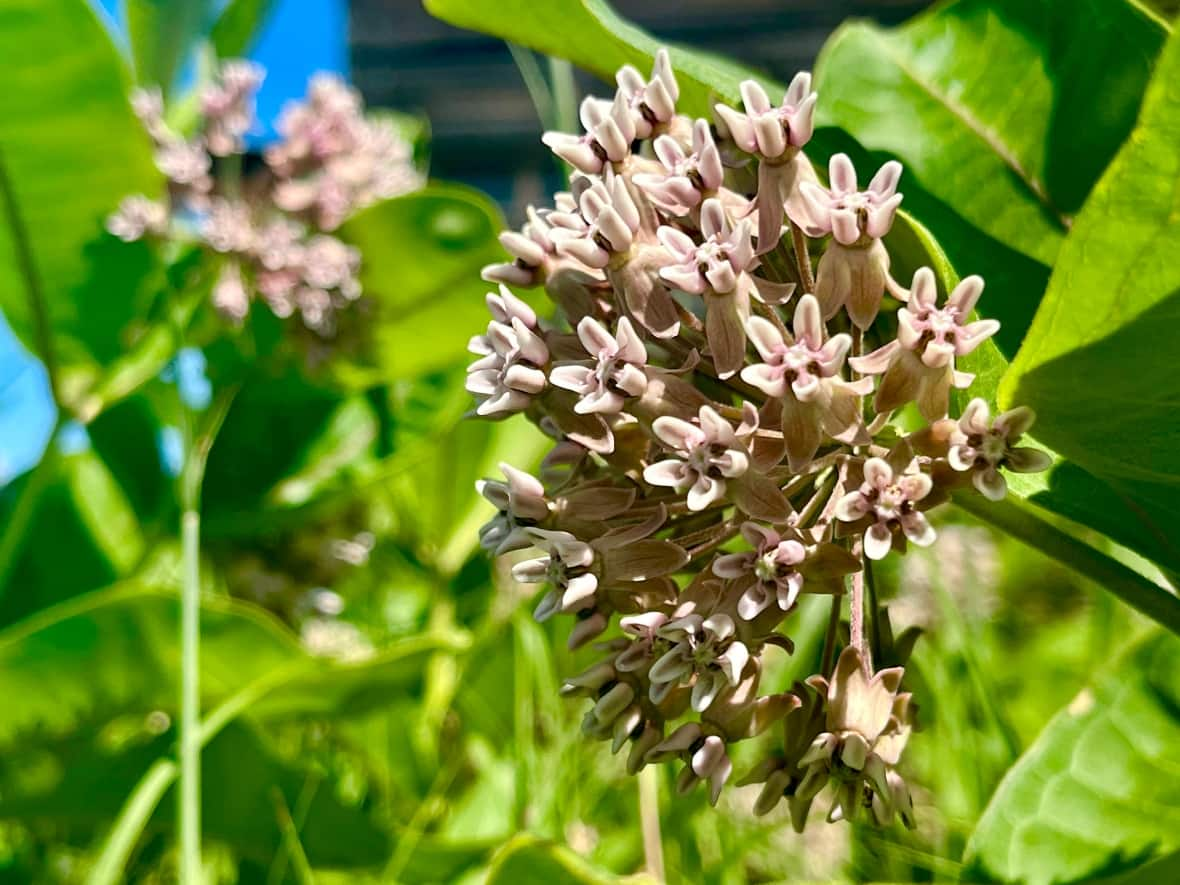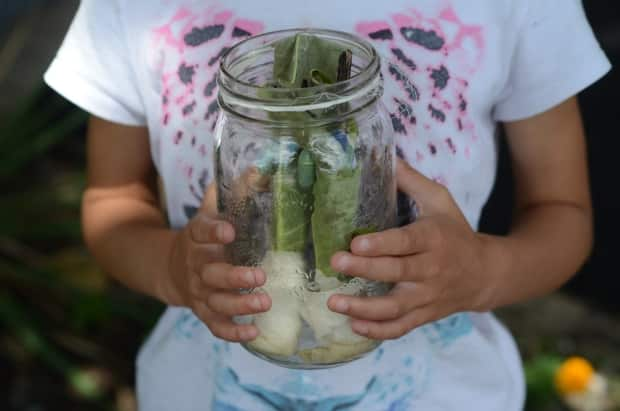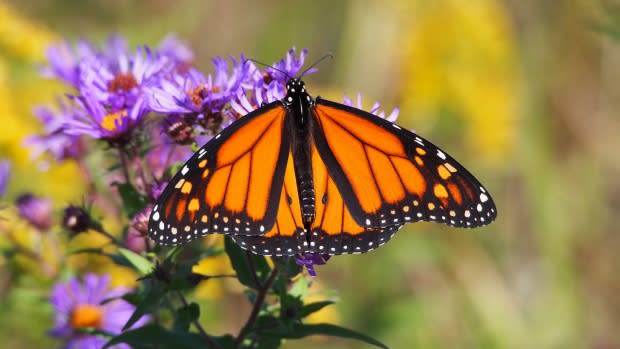Weed or habitat? Ontario cities must 'rethink' their approach to yard complaints, says lawyer

After London workers cut down a monarch butterfly habitat without the homeowner's permission, an environmental lawyer says Ontario cities must re-examine policies addressing complaints over butterfly-friendly wild flowers.
Susan McKee returned from vacation in July only to discover her pollinator garden, once bustling with monarch butterflies and bees, was mowed down by city workers while she was away. She said the garden was used by neighbours as a source of eggs to help colonize nearby gardens with the embattled insect.
McKee got three tickets totalling $300 in cleanup, inspection and administration fees because city workers had to deal with "tall weeds and grass" on her property.
In doing so, workers removed more than a dozen varieties of plants, including milkweed — a plant considered a vital habitat for monarch butterflies, a once pervasive insect that was declared endangered just weeks ago by an international consortium of science and conservation groups.
Whether city workers violated the Species at Risk Act when they destroyed monarch butterfly habitat would be a question for a court to decide, said Theresa McClenaghan, executive director and counsel for the Canadian Environmental Law Association (CELA).
Monarch subject to federal management plan
"It would be a question of whether the city's action was contravening a restoration plan that had been approved under the Species at Risk Act," McClenaghan said.
The monarch butterfly is subject to a federal management plan that has existed since 2016. It encourages "the creation of butterfly gardens using milkweed species native to the area" and "conserving milkweeds and other nectar-producing garden plants in home and school gardens."

But according to the City of London, it didn't do anything wrong. Spokesperson Jo Ann Johnston wrote in an email to CBC News that federal protections for endangered species only apply to "federal lands" and "the actions taken were on private and city property."
"We know the importance of pollinator gardens and providing habitats for species that are at risk, and we recognize how critical they are not only for the species, but for all of us," she wrote.
The actions taken were limited to this property and were as a result of complaints related to the yard and lot maintenance bylaw. - Jo Ann Johnston, City of London
"The city actively includes pollinator habitat and monarch habitat in buffer restoration and other naturalization projects. In this instance, the actions taken were limited to this property and were as a result of complaints related to the yard and lot maintenance bylaw."
McClenaghan, however, said "there should be a rethink" of the way Ontario municipalities deal with complaints about vegetation neighbours might find loathsome or unsightly, especially when it comes to milkweed in pollinator gardens.
McClenaghan said a June 2001 Supreme Court decision ruled local communities have a legal responsibility to look after nature when it upheld the Quebec town of Hudson's ban on cosmetic pesticide use after it was challenged by a pest control company.
"The Supreme Court of Canada said municipalities are 'trustees of the environment,' they're part of the solution."
With that in mind, she said, it's a particularly bad look for "the Forest City," which declared a climate emergency in April 2019 and has drafted an ambitious, decades-long plan to create a more harmonious balance between local human activity and nature.
It's quite ironic then when a municipality goes out and chops down milkweed. - Theresa McClenaghan
"Loss of habitat is highly connected to climate change," McClenaghan said, noting the insect has become a potent emblem of a continent-wide push for better environmental stewardship.
Monarch butterflies are "the symbol of Canada, the U.S. and Mexico's environmental co-operation agreement, so it's quite ironic then when a municipality goes out and chops down milkweed," she said. "It's very dated thinking."
Monarchs will only lay their eggs on milkweed
Milkweed may no longer be considered a noxious weed by the Ontario government, but it still isn't seen as a good thing by the province's Ministry of Agriculture Farming and Rural Affairs, which notes "milkweed species are generally thought to be poisonous to livestock."

"Monarch butterfly females will only lay their eggs on different species of milkweed," said Jeremy McNeil, a Western University professor of biology who studies insects.
"Once the eggs hatch, the caterpillars will feed on those. You can put them on another plant and they will not feed. They're specialists."
McNeil said monarchs have learned to digest and store the same toxic milkweed compounds in their bodies that make the plants poisonous to livestock, so the butterflies are unpalatable to predators.
McNeil said years of education on milkweed has slowly reshaped our understanding of the plant as a vital source of food for the insect.
"We have to ensure that milkweed is here in the summer months when they are breeding, that is for sure. But it's not the only thing that's affecting them over the years."
McNeil said monarch butterflies embark on an incredible journey each spring, leaving their overwintering grounds in the Mexican mountains and flying north thousands of kilometres to their breeding grounds in Canada.
Opening more land to agriculture, pesticide use and changes to weather patterns brought on by climate change have made the voyage all the more perilous because they affect the numbers of plants the insects can feed on.
WATCH | Experts speak on what's contributed to the decline of monarch butterflies:
"If you're driving and you can't find a gas station, what's going to happen?" McNeil said.
"For whatever climatic reason, if there are way fewer flowers in a given year, then guess what? There's going to be less fuel available, they might die and if they don't die, they're going to have a reduced fecundity."
McNeil said this year's drought has had a significant effect on butterfy numbers. In his field work, he visited 99 milkweed plants and found only one larva.
"It really was the most abundant butterfly you would see around," he said. "The number this year was extremely low."


